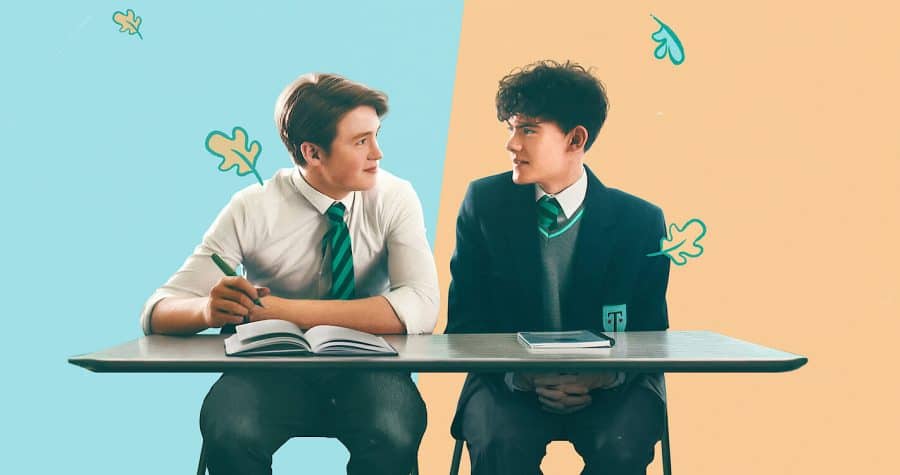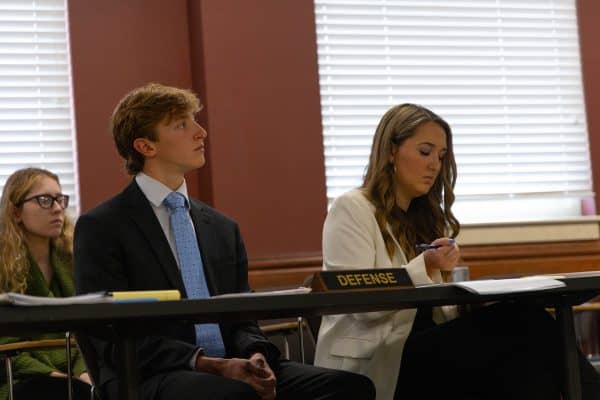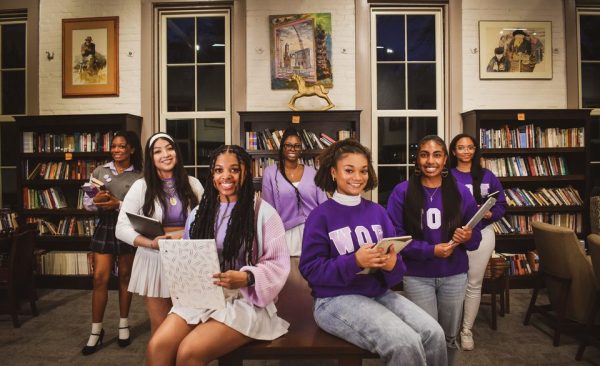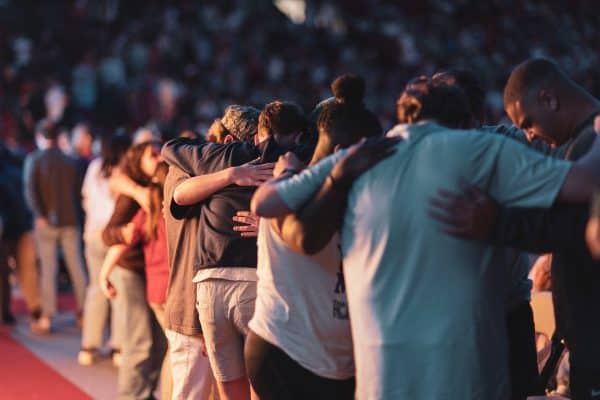Culture Pick: Netflix’s “Heartstopper” is a Joyful Breath of Fresh Air
August 21, 2022
Netflix’s series “Heartstopper” is unique in its depiction of LGBTQ teenagers, especially when compared to other popular shows like “Euphoria,” “Skins” and “13 Reasons Why.” Instead of having a serious tone with heavy subject matters like substance abuse and suicide, “Heartstopper” offers something that many queer youth have longed to see in media: a cute, lighthearted love story.
Based on the successful graphic novel and webcomic series of the same name by Alice Oseman, who also created and wrote the television series, the show has received widespread critical acclaim for its representation of the LGBTQ community, and was recently renewed for two more seasons.
Set in England, the story follows Charlie Spring, an openly gay 14-year-old who develops a crush on his classmate Nick Nelson, the star of the rugby team at their all-boys school, Truham Grammar High. Because of his athleticism and demeanor, Nick is perceived as straight by everyone, including Charlie’s friends, who discourage Charlie from getting his hopes up.
However, things take a turn for the unexpected — or, in the viewer’s case, entirely expected — when it appears that Nick may reciprocate Charlie’s feelings, leading him to question his own sexuality.
A large part of what makes “Heartstopper” so special is the characters and the actors who portray them. Joe Locke and Kit Connor are incredibly endearing as Charlie and Nick, and their blossoming romance is a perfect example of what healthy relationships should look like in media intended for teens; they treat each other with kindness and respect, and are always willing to communicate.
The other members of the main cast are extremely likable as well. Charlie’s friend group is made up of Tao Xu, the self-proclaimed “token straight;” Elle Argent, a transgender girl who used to attend Truham but now goes to the neighboring all-girls school; and Isaac Henderson, an aromantic asexual bookworm.
Then there’s Tara Jones and Darcy Olsson—a lesbian couple who gradually become part of the main group when they befriend Elle at her new school— as well as Nick’s mother, Sarah, who is played by renowned actress Olivia Colman. In fact, Colman’s involvement was kept secret until the show’s release, presumably to highlight the younger actors, most of whom are new to the entertainment industry.
Speaking of the actors, the cast is something that sets “Heartstopper” apart from other teen series — most of them are played by actual teenagers, as opposed to obvious twenty-somethings.
Now, casting adults as teenagers isn’t always a bad thing. In the cases of “Euphoria” and “Gossip Girl,” adults are often more suitable for the roles, as many might find it problematic to put real minors in situations involving sex and graphic nudity.
However, even simulating minors in such provocative ways might be a problem in itself, especially since it often feels like the primary objective is, “Let’s make these teenagers—especially the girls— as desirable as possible for viewers by putting them in heavy makeup and revealing clothing.”
“Heartstopper” does the opposite with its characters; their wardrobe not only resembles things actual teenagers would wear, but the clothing is also very appropriate. No one is hypersexualized. In fact, the show completely disregards sexual tension in favor of romantic affection.
“One important element that makes “Heartstopper” such an addictive source of positivity is the fact that the teenagers who populate its private school halls are kids you would actually want to be around in real life,” said USA Today’s Kayla Lawler in a review on the show. “This is not the place of sex, drugs and rebellion a la HBO’s “Euphoria” or annoying, juvenile kitsch of Netflix’s “The Kissing Booth” films. These are (almost) emotionally mature young adults dealing with serious issues while enjoying their youth.”
For many queer people, this choice is much-welcomed. Media has a history of portraying LGBTQ individuals as overtly sexual, which only reinforces the stereotype that they are lascivious or obsessed with sex. Having a show that portrays queer relationships as more than sexual desire is a nice change. It’s, for lack of a better word, “wholesome.” Instead of focusing on sex, “Heartstopper” focuses on love.
Another welcomed change—when comparing the show to its source material—is the greatly expanded roles of Charlie and Nick’s friends. Tao, Elle, Tara and Darcy have a lot more screen time and depth than their webcomic counterparts.
“In its more subtle fashion, “Heartstopper” also becomes about not putting people into boxes about their gender, sexual orientation, or even what they like,” Nick Allen, a writer for The Playlist, said in his review of the show. “And there’s a poignant resistance to binary and old-fashioned thinking by these events taking place at all boys and all-girls schools, venues that can easily perpetuate homophobia and close-minded thinking.”
But for a series that’s received so much praise for its diversity and representation, Charlie and Nick, the two leads, have still come under fire for both being white and cisgender. All the people of color—Tao, Elle, Tara—are frequently relegated to the sidelines, and Elle is the only character who doesn’t identify with the gender she was assigned at birth. However, the actor who plays Darcy, Kizzy Edgell, is non-binary in real life so future seasons may explore this gender identity more.
These issues can be disheartening, especially when looking at what little representation the LGBTQ community already has. Most queer characters in media are played by cisgender and white people, particularly in the romance genre. Very rarely do people of color or people of other gender identities take center stage.
Oseman might have noticed this problem herself, since the side characters’ personalities have been significantly upgraded from the source material for season one of the Netflix series, and they may be expanded upon in later seasons, especially Tao and Elle’s relationship and Tara and Darcy’s.
“I think that when it comes to queer relationships, there’s no need to hold back the romance,” Oseman said in an interview with SeanzWriters. “I used to think I’d never feature a big romance in my works because it’s been ‘overdone’, but I grew to learn that romance hasn’t been overdone if you’re a marginalized person. There are so, so many romances out there that are cis, straight, white, and able-bodied. But outside of that, there still isn’t much variety.”
While the show does touch on serious issues like bullying, homophobia and transphobia, it never reaches the point of abject misery. Death and tragedy are not the focus. Instead, threads of love and joy wind their way through the story, offering hope to those who need it. It’s about time.











